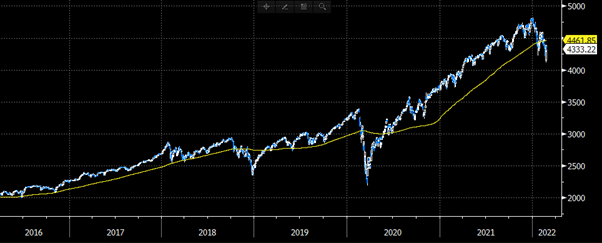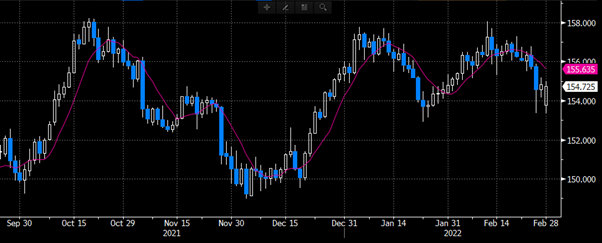Trend following is a systematic trading approach that uses price action rather than fundamental analysis to identify investing opportunities.
It is used by asset managers, algorithmic hedge funds and retail trades alike, and is by far the most popular of all systematic trading strategies.
While the majority of traders use fundamental analysis as the basis for their investing decisions it is impossible to predict market movements consistently and accurately.
While fundamental traders use information such as economic data, P/E and other financial ratios, and supply and demand data to make predictions, trend followers will simply use the price action to buy assets as they move higher and to sell assets as they move lower.
Related article: 12 Trading Tips for BeginnersThis gives them the ability to profit in markets that are trending up AND down, taking advantage of mass psychology, riding investor greed on the path upwards, and fear on the trend downwards.
It also allows investors to trade multiple asset classes without specialist fundamental knowledge as the only information they require is the current and historical price.
But of course, no strategy is fail safe and while trend following strategies can reap large profits in trending markets, they do bleed money while markets move in sideways, rangebound patterns.
It is also important for the trader to be able to exit markets when the trend reverses, so market liquidity is essential, and lower volatility markets are also preferable.
Moving averages are the most popular trend following indicators.
Longer term investors often use the 200-day moving average (dma) when trading individual equities and equity indices.
They initiate the buy order on a break above the 200 dma and close out the position on a daily close below the 200 dma.
This reaps the benefit of bull markets and provides risk management in bear markets closing the position in a consistent and disciplined way, whether it be a profit or a loss.

The daily chart of the U.S. S&P index with the yellow 200 day moving average clearly highlighted. The 200-dma buying strategy captures the bull markets and closes long positions on market corrections below the average. (Source: Bloomberg)
Drag to resize
Shorter term traders often prefer to use the 5- or 20-day moving averages (popular because there are 5 trading days in a week and 20 trading days in a month). Dow Theory (Charles Dow 1884) identified that intermediate trends often last up to 3 months so these shorter 5- and 20-day moving averages will help identify potential intermediate trends early.

GBPJPY with the 20-day moving average highlighted in pink. A trend following trader or trading algorithm will simply buy when the moving average trends up and short (sell) the market when it trends down, irrespective of the underlying fundamental data. (Source: Bloomberg)
Drag to resize
“A mistake is when you don't follow your rules. If you don't have rules in trading, everything you do is a mistake.”
~ Van K. Tharp
Drag to resize
The beauty of trend following is that not only does it highlight trade entry signals, but it also highlights the trade exit whether it be a profit or a loss.
One of the most difficult aspects of discretionary trading is when to exit a trade. As humans we typically want to close out winning trades too early to lock in the profits, while we also typically hold our losing trades too long, hoping they will bounce back into profit.
This behavioral bias known as loss aversion is a key reason why retail traders lose money because occasionally those small losses turn into large ones if not closed out early.
Consistent profitable trading is about small profits, small losses and big profits, eradicating the big losses and trend following helps enable this with its automated risk management.
Related article: 9 Behavioral Finance Books Every Budding Trader Should Read
Another behavioral bias that trend following over-comes is over-trading. The quintile (10%) of traders who put on the most trades have 7% lower annual returns than the quintile of traders who put on the least trades.
Trend following overcomes this urge to chase profits, instead it identifies the trade entries and exits in a defined and consistent manner, and we are also able to back test our strategies using historical data and coding language like Python.
Drag to resize
"Accepting what the market wants is the quickest way to succeed as a trader."
~ Peter Robbins
Drag to resize
#1 Time frameAm I a long-term investors or a shorter-term trader?
#2 Trade direction
Trending higher, trending lower, or sideways range bound.
#3 Trade exit
Profit or loss, a trend following strategy will automate the trade exit for disciplined and consistent risk management. Key for profitable trading.
#4 Position size
This is critical to long term consistent compounded returns. Kelley criterion is a simple and effective position sizing tool.
#5 Back testing
How does the strategy perform historically. But take care, we need to take account of bid/offer spreads, execution fees and market liquidity.
Drag to resize
"Give up trying to catch the first eighth and the last eighth of a trend. These two are the most expensive eighths in the world."
~ Jesse Livermore
Drag to resize
While novice and unprofitable traders like to predict markets and desperately hold losing trades, trend following is a simple trading strategy that identifies and follows trending markets.
It works on different time frames and incorporates risk management, helping a trader overcome their many behavioral biases that inhibit disciplined, consistent, and above all profitable trading.




